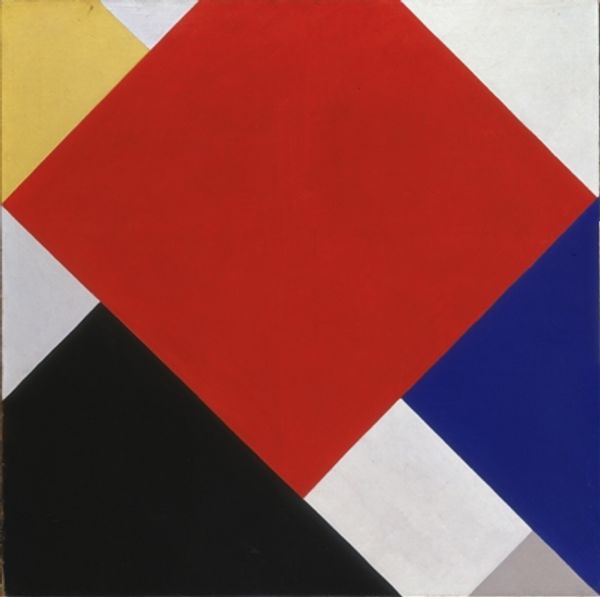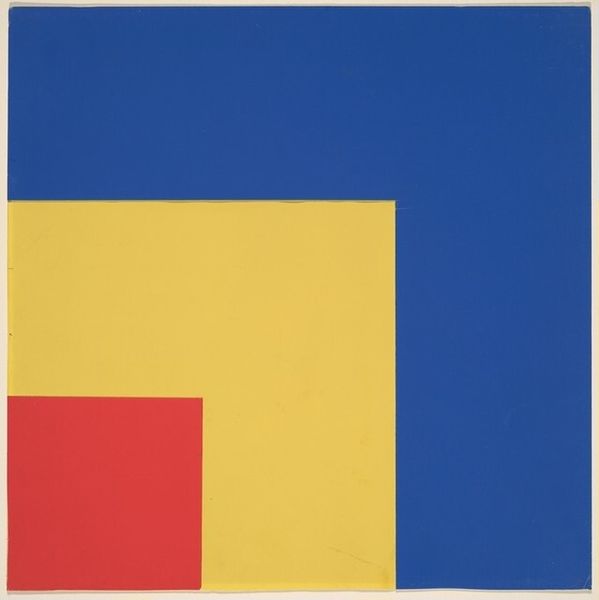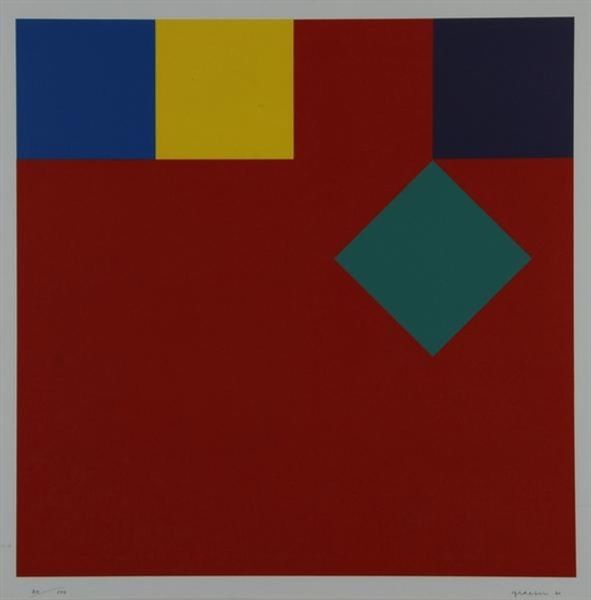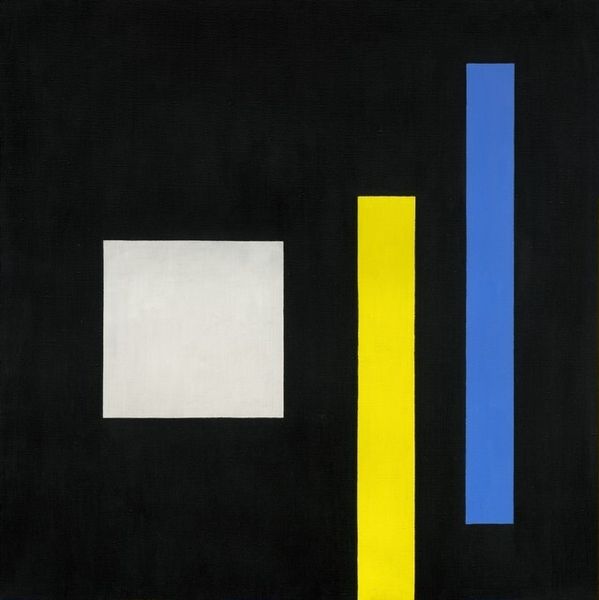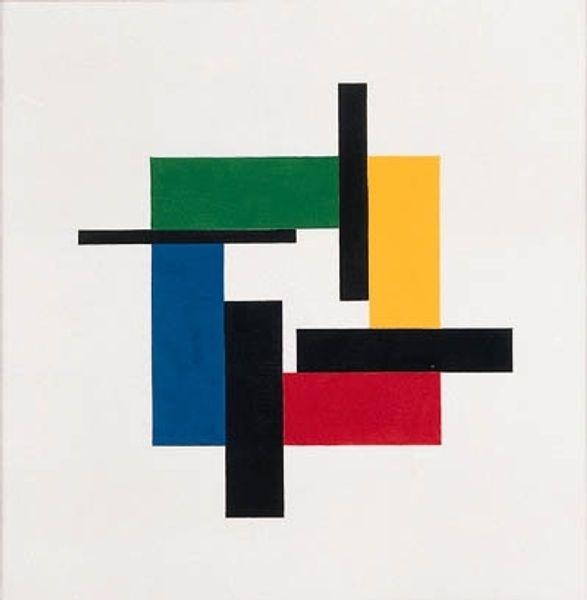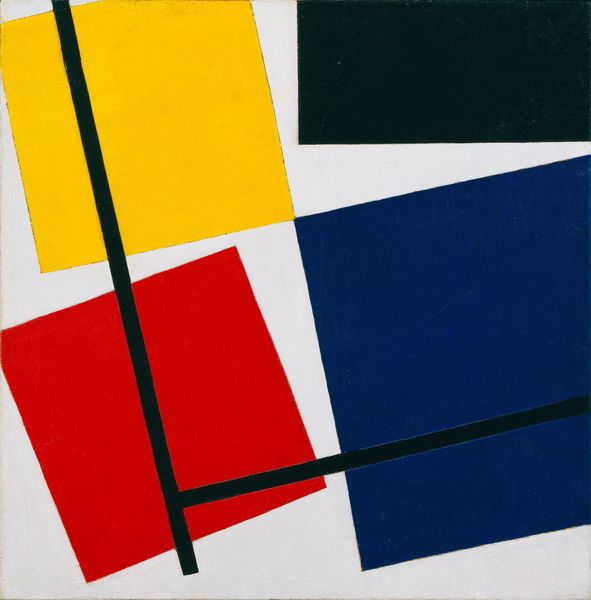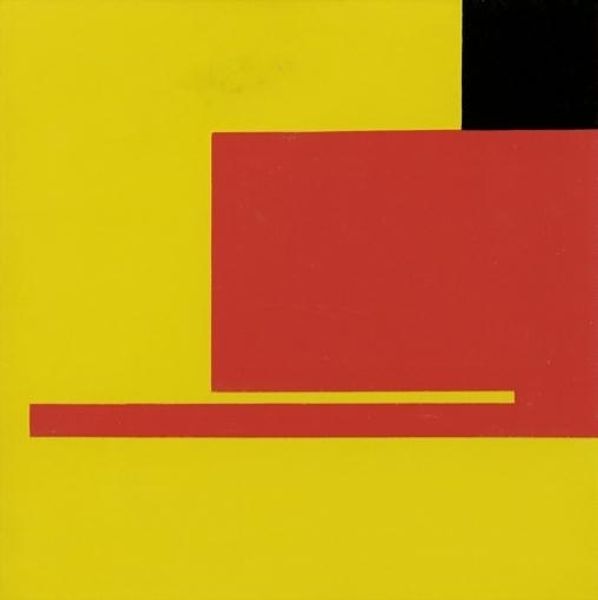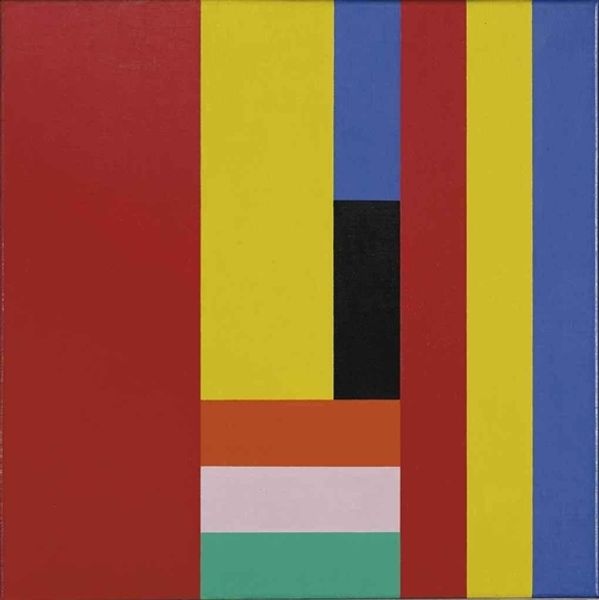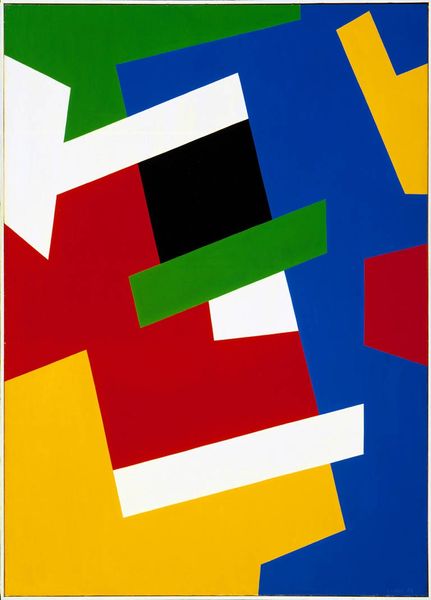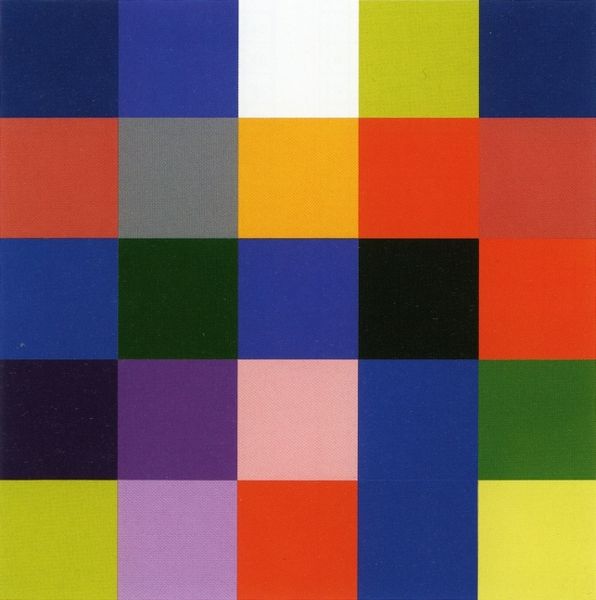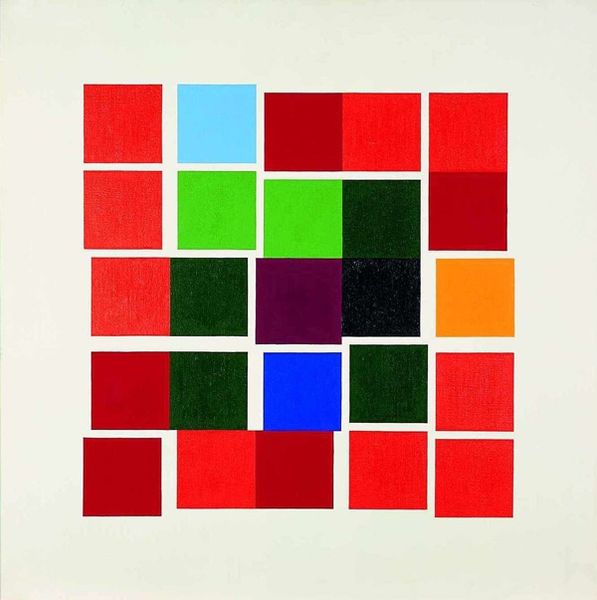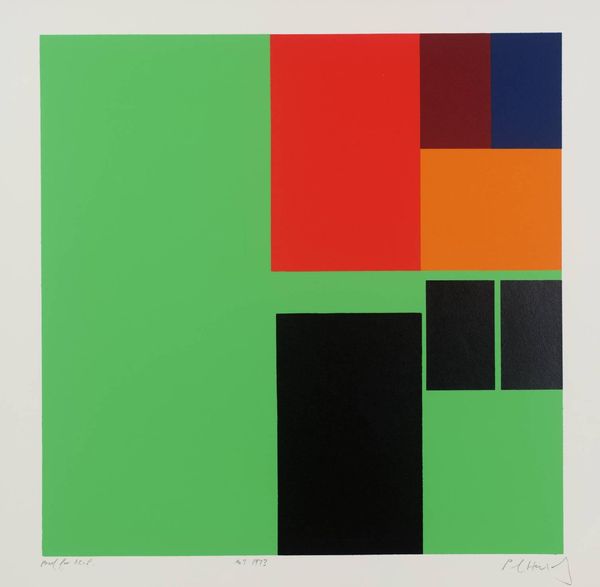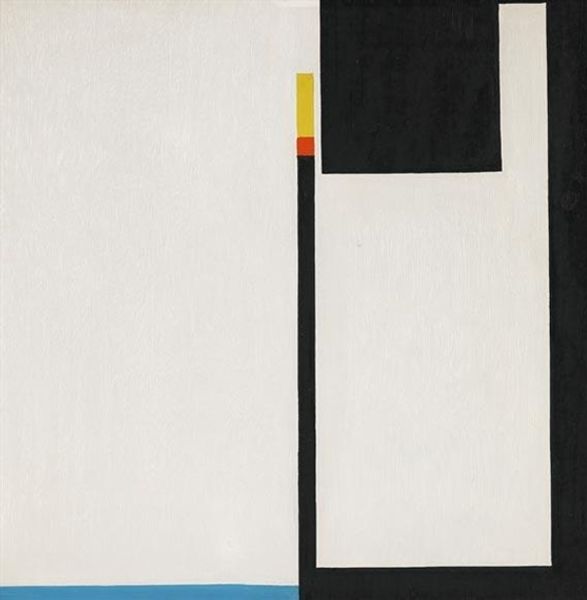
painting, acrylic-paint
#
concrete-art
#
painting
#
acrylic-paint
#
geometric
#
abstraction
#
line
#
modernism
#
hard-edge-painting
Copyright: Max Bill,Fair Use
Editor: Here we have Max Bill’s "1-4 um excentrum IV," from 1969, an acrylic painting. The composition, at first glance, feels very geometric and rigid. What elements stand out to you in this piece? Curator: The formal elements are certainly striking. The composition hinges upon the interplay between the stark white ground and the carefully calibrated blocks of color – yellow, red, blue, and black. Observe how the lines formed by the edges of these blocks create a dynamic tension. Consider also the relationship between these colors. Do they generate visual harmony or dissonance? Editor: I see what you mean. The blocks create almost a visual puzzle. The placement of the black, specifically, anchors the eye. I hadn't thought of the color relationships quite that way before. Curator: Precisely. This isn’t merely decorative. Bill manipulates our perception through precise arrangement. What role does the white space play in relation to the painted sections? Editor: I suppose it's creating balance... or maybe intentionally *un*balancing the image, given that it dominates the picture plane. It emphasizes the limited palette, and makes the colors more vibrant, too. It’s also very... clean. Curator: Yes, the “cleanliness” contributes to its effect. Do you see any mathematical relationships present? Are the color blocks positioned according to any rational formula? Editor: It’s not immediately obvious, but the bands do appear proportional. Perhaps an exercise in geometric precision for its own sake? Curator: That’s a valuable observation. Indeed, Bill, as a proponent of Concrete Art, aimed to create art that was purely self-referential. The work is meant to be understood in terms of its own internal logic, free from external narratives. What is communicated, then, through such self-contained visual language? Editor: This was a fascinating exploration, considering how color and form can independently create tension and harmony without any figurative elements. Thanks for that insight! Curator: It highlights the capacity of non-representational forms to communicate complex visual statements through their intrinsic properties alone.
Comments
No comments
Be the first to comment and join the conversation on the ultimate creative platform.
